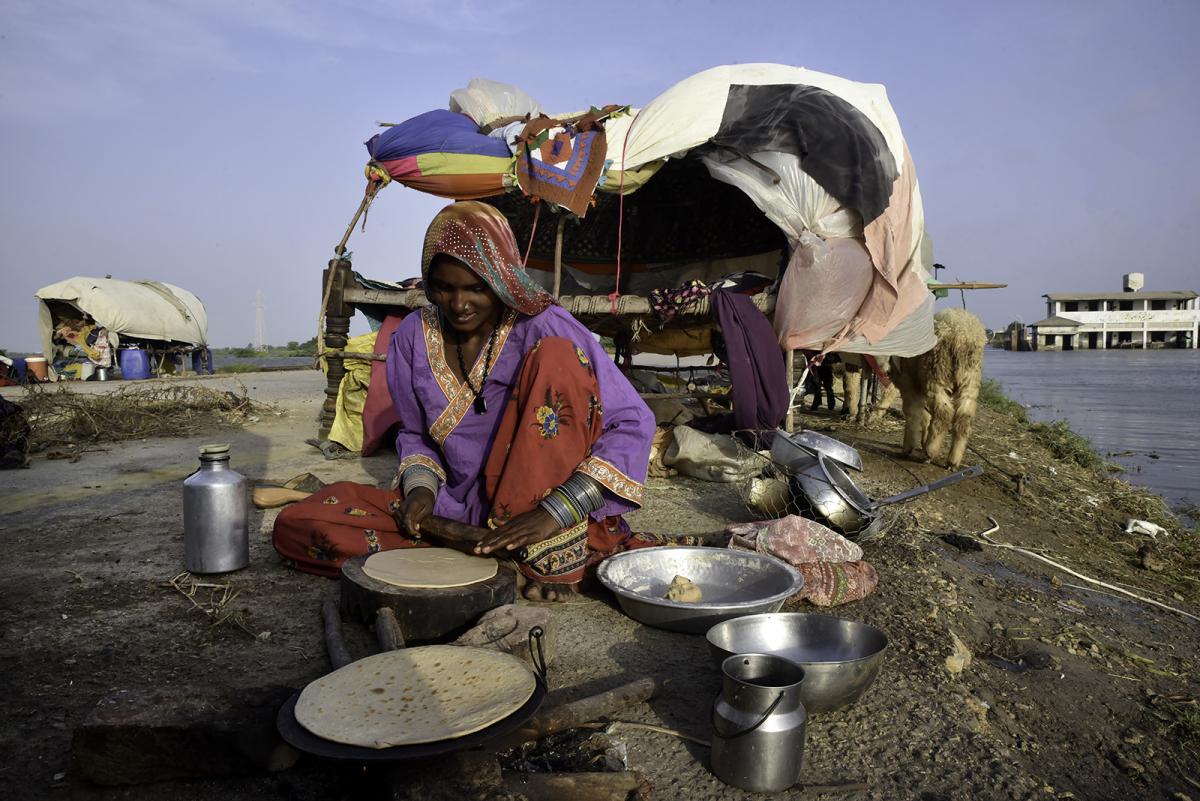The global food crisis is affecting millions of people around the world.
In 2023, record levels of acute food insecurity persist due to protracted food crises and new shocks. In 48 countries, 238 million people are facing high levels of acute food insecurity – 10% more than in 2022.
How is the EU reacting to this alarming trend? What are the main drivers of these crises and the countries affected?
21.6 million more people face high level of acute insecurity than in 2022
According to the Mid-Year Update of the Global Report on Food Crises, there are currently at least 238 million acutely food insecure people around the world, with a 10% increase on the 2022 figure.
How is the EU helping?
The EU is at the forefront of fighting global hunger. The European Commission is a member of the Food Assistance Convention and commits to providing a minimum of €350 million annually to alleviate food insecurity.
In 2022, the EU largely exceeded this commitment already allocating approximately €1 billion for humanitarian food assistance and nutrition, which accounted for more than 1/3 of the EU’s total humanitarian budget.
In 2023, the main drivers were conflict/insecurity, economic shocks, and weather extremes
The drivers of food crises are interlinked and mutually reinforcing. Food insecurity is caused by a combination of factors that feed off each other and by the interaction between hazards and people specific vulnerabilities.
The main drivers are:
- Conflict: it remains the main driver of food insecurity in 2023. Conflict disrupts income sources and hinders food access due to market disruptions, leading to price spikes and food shortages. In addition, it affects the delivery of humanitarian aid, and warring parties intentionally deny access to food as a weapon of war.
- Economic shocks: they are a prominent driver of hunger, exacerbated by repercussions of the Russian invasion of Ukraine. The economic resilience of poor countries has dramatically decreased, and they now face extended recovery periods and less ability to cope with future shocks.
- Weather extremes: droughts, floods, dry spells, storms, cyclones, hurricanes, typhoons, or the untimely start of rainy seasons remain key drivers of food insecurity. They directly impact crops and livestock, disrupt transportation routes, and hinder market stocking. Many countries are still recovering from the prolonged effects of droughts or floods.
Some 8.6 million people in Sudan are facing high levels of acute food insecurity
Since the start of the conflict in April 2023, acute food insecurity in Sudan has strongly increased, further worsening an already alarming nutrition crisis.
Prior to conflict, food insecurity was at the highest levels in a decade, with 11.7 million people (1/4 of the population) facing acute hunger. Sudan had one of the highest numbers of people in the emergency level of food insecurity (IPC4), with 3.1 million people affected.
According to the Mid-Year Update of the Global Report on Food Crises, due to the conflict, an additional 8.6 million people in the Sudan are facing high levels of acute food insecurity.
This is a 74% increase since the 2022 peak, bringing the total to 20.3 million people (42% of the population) in IPC Phase 3 or above during July-September 2023.
The humanitarian crisis is exacerbated by both the absence of humanitarian assistance in the area and the frequent theft of humanitarian supplies.
For this reason, EU stepped up its humanitarian assistance and delivered around 400 tonnes of humanitarian supplies through 6 air bridge flights to Sudan and 5 air bridge flights to Chad between May and October.
In Chad, particularly, returnees concentrated spontaneously in locations near the border lacking essential commodities and services, including food, according to the International Organization for Migration.
The EU tries to meet the needs of the ever-increasing number of displaced people, refugees, and Chadians fleeing the conflict in neighbouring Sudan, as well as the needs of the host communities welcoming them, and has mobilised over €18.6 million so far.
The war in Ukraine continues to create uncertainty in global food markets
The 2023 Mid-Year Update of the Global Report on Food Crises shows that the Ukraine war still impacts on food prices, which are sensitive to any global food supply changes.
For example, the Kakhovka dam breach in June 2023 and the termination of the Black Sea Grain Initiative in July 2023 could decrease the amount of exportable surpluses and the volume of exports. As a result, these factors could impact future global food supplies and the stability of international food prices.
In June, the EU and its humanitarian partner WFP delivered thousands of life-saving food rations to people affected by the Nova Kakhovka catastrophe.
To further support humanitarian operations on the ground, the EU has also mobilised an additional €500,000 to address the immediate needs resulting from the destruction of the Kakhovka dam. This comes on top of the €200 million in humanitarian aid already allocated in 2023 for Ukraine.
The withdrawal by Russia from the Black Sea Grain Initiative is also affecting food aid delivery by humanitarian organisations. For instance, Ukraine supplied over half of the wheat procured by the World Food Programme in 2022, and 80% so far in 2023. (DG ECHO Reports on Food security no.6, September 2023)
The EU continues to step up its action to mitigate food insecurity
The EU is one of the main donors of humanitarian assistance, including for emergency food and nutrition aid. Since 2010, the EU has been rolling out its humanitarian food-assistance policy and helped more than 100 million people lacking access to sufficient amounts of safe and nutritious food.
In 2022, the EU allocated around €1.1 billion for humanitarian food and nutrition assistance, 90% more than in 2021, and more than twice the amount in 2020.
In 2023, we are working to maintain appropriate levels of food assistance and mobilise additional funds.
The EU provides humanitarian food assistance to victims of food crises worldwide and invests in reducing the risk of famine. Our support is targeted and context-specific, depending on the needs of specific groups, such as children under 5 years old.
A significant part of our food assistance is provided in the form of cash transfers. This is because sometimes there is enough food in shops and markets, but the victims of disasters do not have money to purchase it.
When this happens, the EU prefers helping vulnerable people get access to the food they need by giving them money to buy it. This is often more efficient and effective than shipping sacks of rice or flour across the globe.



